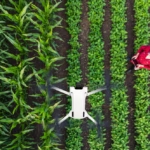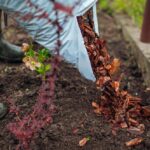Conducting sensory evaluation and product testing in agroprocessing involves a systematic approach to assess the quality, acceptability, and sensory attributes of agricultural products. Here is a step-by-step guide on how to conduct sensory evaluation and product testing in agroprocessing:
- Define the objectives: Determine the specific objectives of the sensory evaluation and product testing. This could include assessing the overall quality, flavor, aroma, texture, appearance, or any other sensory attribute of the agroprocessed product.
- Select and train a panel: Recruit a panel of trained sensory evaluators who have the ability to detect and describe sensory attributes accurately. Train them in sensory evaluation techniques, including terminology, rating scales, and proper evaluation procedures. The size of the panel may vary depending on the specific requirements and resources available.
- Develop evaluation methods: Decide on the appropriate evaluation methods to be used. Commonly used methods include descriptive analysis, hedonic rating, discrimination testing, and preference testing. Choose the method(s) that best align with your objectives and the nature of the agroprocessed product.
- Prepare the samples: Prepare the samples to be evaluated according to the specific requirements. Ensure that the samples are representative of the product being tested and are presented in a consistent and randomized manner to avoid any bias. Follow proper handling and storage procedures to maintain sample quality.
- Conduct the sensory evaluation: Execute the evaluation using the chosen methods. Provide the sensory evaluators with clear instructions on the evaluation procedure, including sample presentation, evaluation forms, and any specific criteria to be assessed. Create a controlled environment to minimize external factors that may influence sensory perception.
- Collect and analyze data: Gather the data from the sensory evaluation sessions. This may involve collecting scores, rankings, or other relevant information depending on the evaluation method used. Analyze the data using statistical techniques to identify patterns, differences, and relationships between sensory attributes and product characteristics.
- Interpret the results: Interpret the sensory evaluation results in the context of the objectives and requirements. Assess the sensory attributes of the agroprocessed product and draw conclusions about its quality, acceptability, and potential improvements. Consider any recommendations for adjustments or modifications based on the findings.
- Report and communicate the findings: Prepare a comprehensive report summarizing the sensory evaluation process, results, and conclusions. Communicate the findings to relevant stakeholders, such as agroprocessing companies, product developers, marketing teams, or consumers, as appropriate.
- Continuous improvement: Use the sensory evaluation results to drive continuous improvement in agroprocessing. Incorporate the feedback obtained from the evaluation to refine product formulations, optimize processing techniques, or develop new products that better meet consumer preferences.
It is important to note that sensory evaluation and product testing may require expertise in sensory science and statistical analysis. If you are unfamiliar with these areas, consider seeking guidance from experts or collaborating with professionals who have experience in sensory evaluation in the agroprocessing field.








